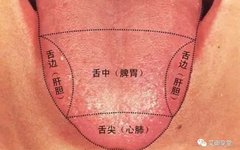Inheriting the fire of Qi Huang, a public account with substance and warmth.
Ai Yu Xiang Tang
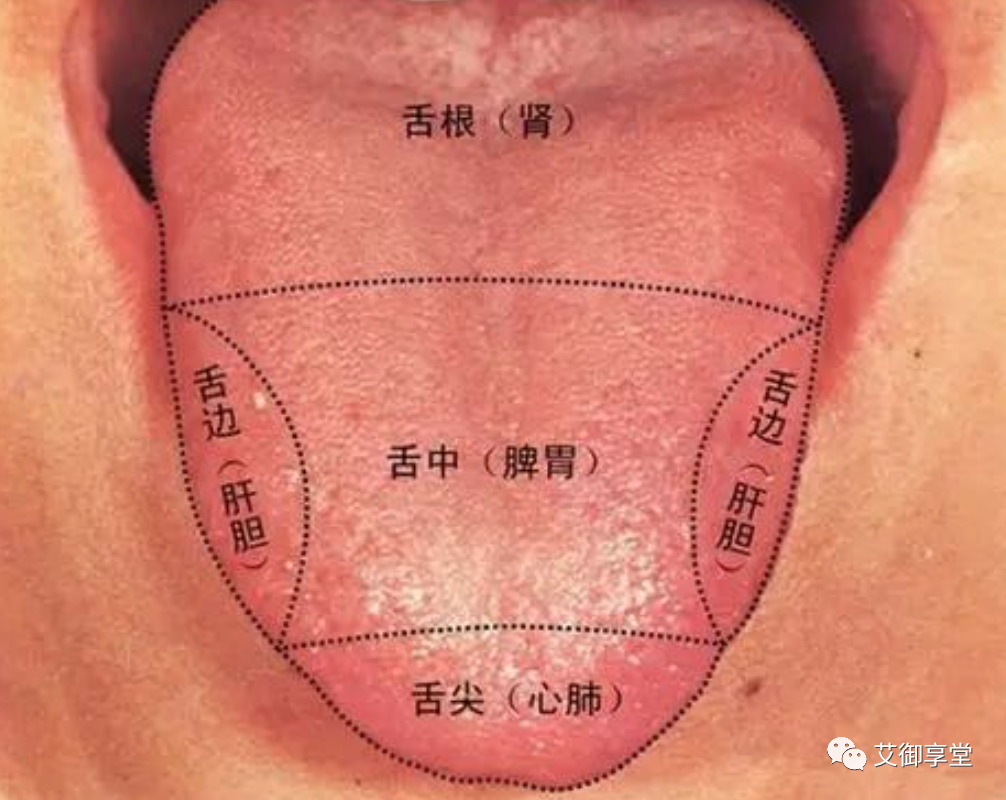
Distribution map of the organs on the tongueTongue diagnosis is a simple and effective method for assisting in the diagnosis and differentiation of diseases by observing the color and shape changes of the tongue. It is also one of the key components of TCM observation diagnosis.The tongue is the sprout of the heart, the external manifestation of the spleen, and the coating is produced by the stomach qi. The hand Shaoyin heart channel connects to the root of the tongue, the foot Shaoyin kidney channel runs alongside the root of the tongue, the foot Jueyin liver channel connects to the root of the tongue, and the foot Taiyin spleen channel connects to the root of the tongue, spreading under the tongue. Therefore, changes in the internal organs can be reflected in the tongue body and coating.Tongue diagnosis mainly examines the shape, color, moisture, and dryness of the tongue body and coating to determine the nature of the disease, the severity of the condition, the abundance or deficiency of qi and blood, the balance of body fluids, and the deficiency or excess of the internal organs.

Normal tongue imageThe most enviable tongue is the “Peach Blossom Tongue”. Generally, people with a balanced constitution have the most beautiful tongue image, which is a light red color resembling peach blossoms, with a thin layer of white coating. This enviable tongue image is referred to as the “Peach Blossom Tongue”.During tongue diagnosis, observations are made in the order of tip of the tongue – middle of the tongue – root of the tongue – sides of the tongue. First, observe the tongue body, then the coating, for about 30 seconds. If the diagnosis is unclear after one observation, allow the patient to rest for 3-5 minutes before re-examining.Below is a commonly seen clinical tongue coating atlas. With these high-definition tongue diagnosis atlases, you can understand health by looking at the tongue, everyone should have a copy!Tongue shape and surface1 Tongue with red spots: Internal heat accumulation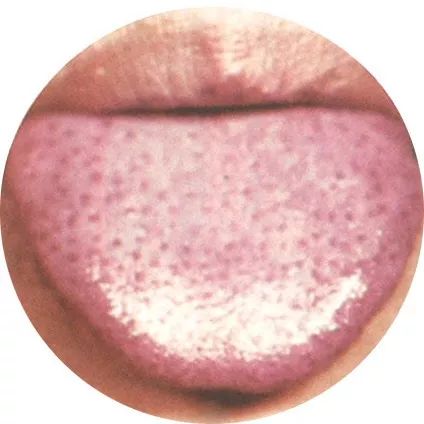 Red spots or prickles on the tongue indicate excessive internal heat.
Red spots or prickles on the tongue indicate excessive internal heat. Red spots or prickles on the tip, middle, and sides of the tongue represent excessive heart fire, excessive gastrointestinal heat, and excessive liver and gallbladder fire, respectively.2 Cracked tongue: Deficiency of essence and blood
Red spots or prickles on the tip, middle, and sides of the tongue represent excessive heart fire, excessive gastrointestinal heat, and excessive liver and gallbladder fire, respectively.2 Cracked tongue: Deficiency of essence and blood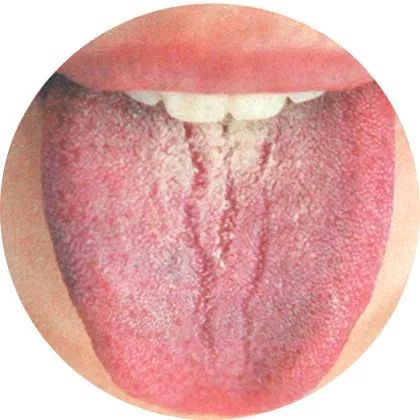 Cracks generally have no coating covering them, indicating deficiency of essence and blood.
Cracks generally have no coating covering them, indicating deficiency of essence and blood. White and cracked coating indicates deficiency of essence and blood; a crimson and dry tongue with cracks indicates heat damaging body fluids.3 Tongue with teeth marks: Yang deficiency
White and cracked coating indicates deficiency of essence and blood; a crimson and dry tongue with cracks indicates heat damaging body fluids.3 Tongue with teeth marks: Yang deficiency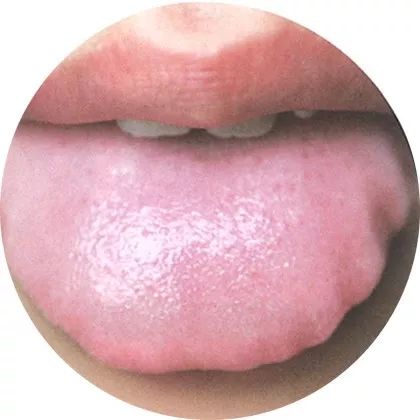 The tongue body is pale, and the coating is pale, indicating spleen and kidney Yang deficiency, with internal dampness and phlegm.
The tongue body is pale, and the coating is pale, indicating spleen and kidney Yang deficiency, with internal dampness and phlegm. This tongue image is very soft, indicating Yang deficiency in the body, and physical strength is declining.4 Pale white tongue: Internal deficiency of sweat
This tongue image is very soft, indicating Yang deficiency in the body, and physical strength is declining.4 Pale white tongue: Internal deficiency of sweat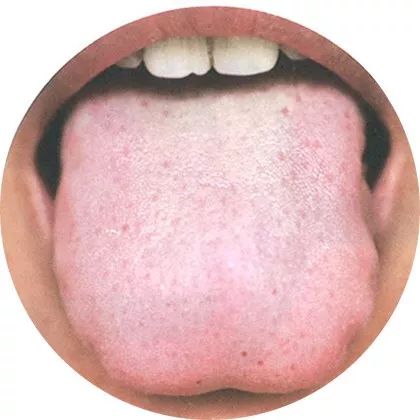 The tongue body is pale and plump, resulting from Yang deficiency; a pale and thin tongue results from deficiency of qi and blood.
The tongue body is pale and plump, resulting from Yang deficiency; a pale and thin tongue results from deficiency of qi and blood. Pale white tongue indicates a deficiency syndrome and a cold syndrome.5 Red tongue: Presence of heat evil
Pale white tongue indicates a deficiency syndrome and a cold syndrome.5 Red tongue: Presence of heat evil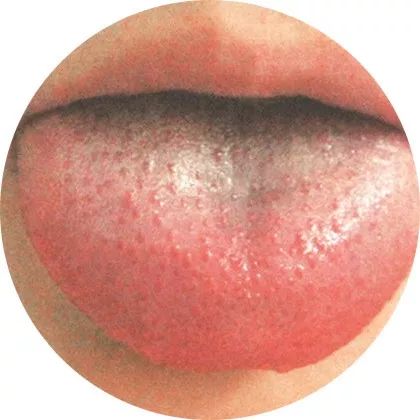 Red tip with prickles indicates heart fire rising; a red tongue with yellow and dry coating indicates internal excess heat; a red tongue with little or no coating indicates Yin deficiency and internal heat.
Red tip with prickles indicates heart fire rising; a red tongue with yellow and dry coating indicates internal excess heat; a red tongue with little or no coating indicates Yin deficiency and internal heat. This indicates a heat syndrome, which may be due to excessive internal heat accumulation, while also observing if there are red spots on the tongue surface.6 Crimson tongue: Strong heat evil
This indicates a heat syndrome, which may be due to excessive internal heat accumulation, while also observing if there are red spots on the tongue surface.6 Crimson tongue: Strong heat evil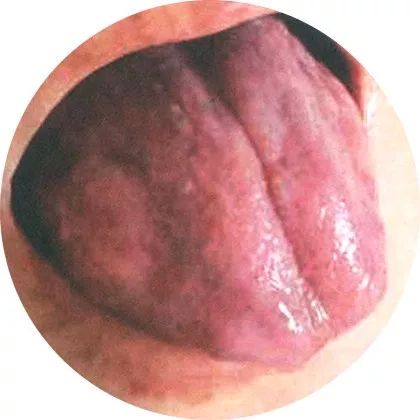 The tongue is red and dry, with prickles or cracks, indicating excessive internal heat; a red tongue without coating and smooth indicates exhaustion of stomach and kidney Yin.
The tongue is red and dry, with prickles or cracks, indicating excessive internal heat; a red tongue without coating and smooth indicates exhaustion of stomach and kidney Yin. This tongue image indicates that heat evil has penetrated deeply into the blood and nutrients, usually indicating that body fluids have been depleted, with deeper colors indicating stronger heat evil and more severe symptoms.7 Purple tongue: Poor blood circulation
This tongue image indicates that heat evil has penetrated deeply into the blood and nutrients, usually indicating that body fluids have been depleted, with deeper colors indicating stronger heat evil and more severe symptoms.7 Purple tongue: Poor blood circulation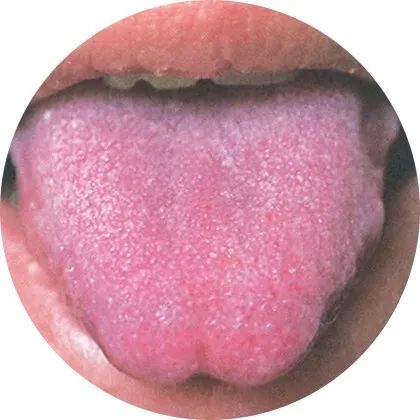 The tongue is bluish-purple, indicating poor blood circulation.The purple tongue may indicate excessive internal heat accumulation.
The tongue is bluish-purple, indicating poor blood circulation.The purple tongue may indicate excessive internal heat accumulation. Cold syndrome, heat syndrome, or blood stasis syndrome may present this tongue image, mainly caused by poor blood circulation.Tongue size1 Fat tongue: Internal cold deficiency
Cold syndrome, heat syndrome, or blood stasis syndrome may present this tongue image, mainly caused by poor blood circulation.Tongue size1 Fat tongue: Internal cold deficiency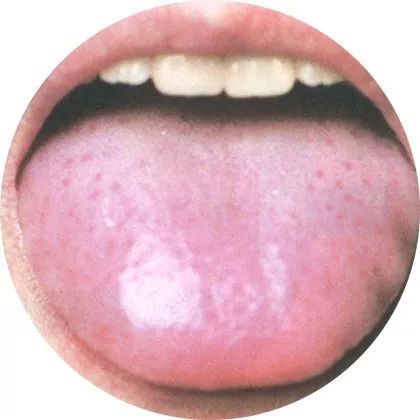 Pay attention to the color of the tongue, the coating, and whether there are red spots on the tongue surface.
Pay attention to the color of the tongue, the coating, and whether there are red spots on the tongue surface. Yellowish coating often indicates excessive heart and spleen heat; a swollen tongue with dark purple color often indicates blood stasis obstructing the channels.2 Fat pale tongue: Weak Yang
Yellowish coating often indicates excessive heart and spleen heat; a swollen tongue with dark purple color often indicates blood stasis obstructing the channels.2 Fat pale tongue: Weak Yang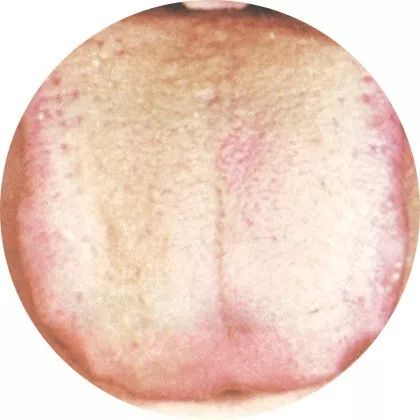 Due to weak Yang, the warming and promoting functions are affected, and the distribution of body fluids is weakened, resulting in a plump and pale tongue.
Due to weak Yang, the warming and promoting functions are affected, and the distribution of body fluids is weakened, resulting in a plump and pale tongue. Fat pale tongue indicates weak Yang and retention of dampness.3 Thin red tongue: Nutritional deficiency
Fat pale tongue indicates weak Yang and retention of dampness.3 Thin red tongue: Nutritional deficiency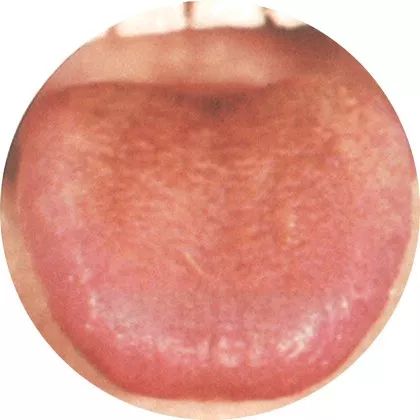 The reddish tongue indicates internal heat or inflammation, prolonged heat damages body fluids, and internal nutrition is consumed.
The reddish tongue indicates internal heat or inflammation, prolonged heat damages body fluids, and internal nutrition is consumed. A thin tongue is a sign of nutritional and fluid deficiency.4 Thin pale tongue: Deficiency of both qi and blood
A thin tongue is a sign of nutritional and fluid deficiency.4 Thin pale tongue: Deficiency of both qi and blood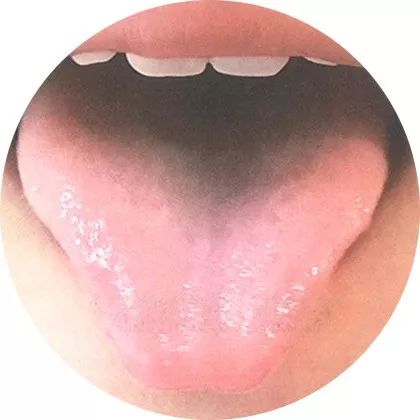 A thin pale tongue with obvious coating often accompanies mild cold or indigestion, indicating a weak constitution.
A thin pale tongue with obvious coating often accompanies mild cold or indigestion, indicating a weak constitution. This reflects a pathological state of deficiency of both qi and blood, indicating malnutrition.5 Old tongue: Confrontation of righteous and evil
This reflects a pathological state of deficiency of both qi and blood, indicating malnutrition.5 Old tongue: Confrontation of righteous and evil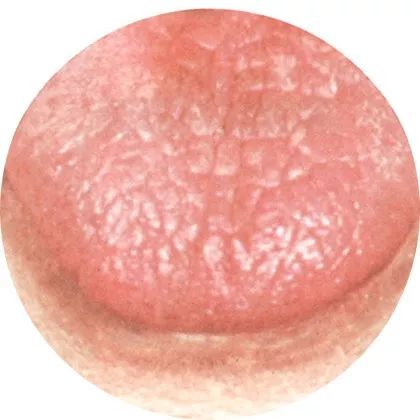 The tongue coating is yellowish-white or gray-black, indicating a predominance of excess syndrome and heat syndrome.
The tongue coating is yellowish-white or gray-black, indicating a predominance of excess syndrome and heat syndrome. Old tongue is often seen in the stage of confrontation between righteous and evil, where the evil qi is fierce, but the body’s resistance is also strong.6 Tender tongue: Low metabolic function
Old tongue is often seen in the stage of confrontation between righteous and evil, where the evil qi is fierce, but the body’s resistance is also strong.6 Tender tongue: Low metabolic function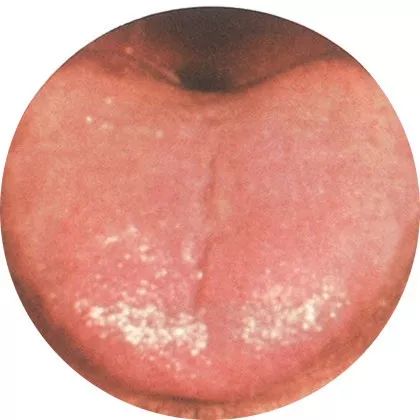 This often indicates deficiency syndrome, cold syndrome, and damp syndrome.
This often indicates deficiency syndrome, cold syndrome, and damp syndrome. Patients with weakened organ function, low nutritional metabolism, or sub-healthy individuals often present this tongue image.Tongue coating thickness1 Thin coating: Mild condition
Patients with weakened organ function, low nutritional metabolism, or sub-healthy individuals often present this tongue image.Tongue coating thickness1 Thin coating: Mild condition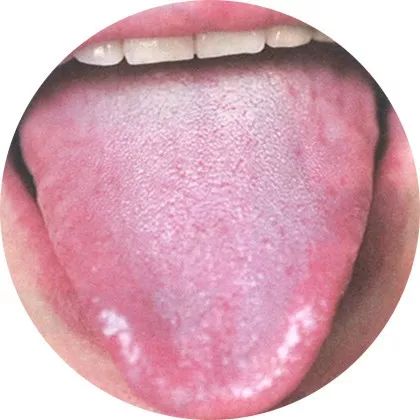 A thin white coating and a light red tongue are normal tongue images; a thin yellow coating mainly reflects the pathological characteristics of initial heat syndrome.
A thin white coating and a light red tongue are normal tongue images; a thin yellow coating mainly reflects the pathological characteristics of initial heat syndrome. This indicates normal tongue coating or the initial stage of a disease, or shows a mild condition.2 Thick coating: Gastrointestinal accumulation
This indicates normal tongue coating or the initial stage of a disease, or shows a mild condition.2 Thick coating: Gastrointestinal accumulation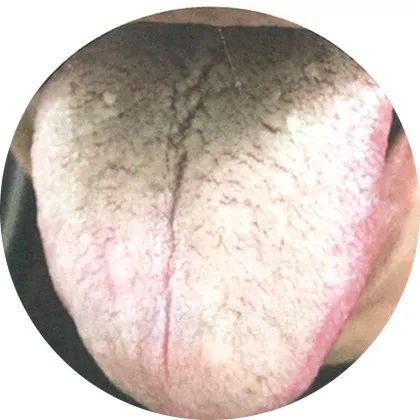 If the tongue body is red, the coating is yellow, thick, and dry, it indicates excessive heat damaging Yin; if it is a light red tongue, the coating is thick, white, and greasy, it indicates phlegm, dampness, and food stagnation.
If the tongue body is red, the coating is yellow, thick, and dry, it indicates excessive heat damaging Yin; if it is a light red tongue, the coating is thick, white, and greasy, it indicates phlegm, dampness, and food stagnation. This indicates a transition from a mild to a severe condition, or the presence of gastrointestinal accumulation.3 Dry coating: Vomiting and diarrhea damaging fluids
This indicates a transition from a mild to a severe condition, or the presence of gastrointestinal accumulation.3 Dry coating: Vomiting and diarrhea damaging fluids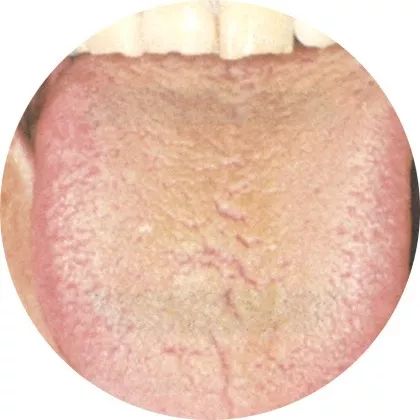 If the coating is only dry and white, it indicates poor circulation of body fluids; if the coating is dry and yellow, it indicates excessive stomach heat damaging fluids; if the coating is dry and black, it indicates extreme heat damaging Yin.
If the coating is only dry and white, it indicates poor circulation of body fluids; if the coating is dry and yellow, it indicates excessive stomach heat damaging fluids; if the coating is dry and black, it indicates extreme heat damaging Yin. This generally indicates high fever, vomiting, and diarrhea damaging fluids. It is also important to check the color of the tongue itself.4 Rough coating: Fluid deficiency
This generally indicates high fever, vomiting, and diarrhea damaging fluids. It is also important to check the color of the tongue itself.4 Rough coating: Fluid deficiency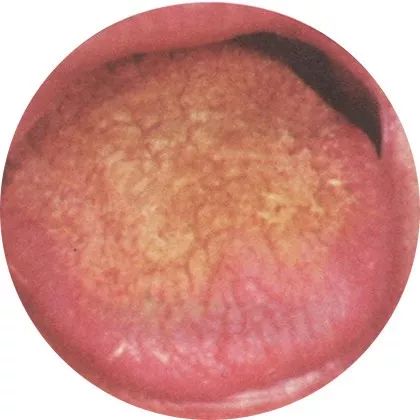 If the dryness in the body becomes severe, it is necessary to worry about long-term chronic diseases, such as hyperlipidemia, diabetes, and those with asthma may feel difficulty in breathing.
If the dryness in the body becomes severe, it is necessary to worry about long-term chronic diseases, such as hyperlipidemia, diabetes, and those with asthma may feel difficulty in breathing. Rough coating indicates severe fluid deficiency.5 Slippery coating: Mental fatigue
Rough coating indicates severe fluid deficiency.5 Slippery coating: Mental fatigue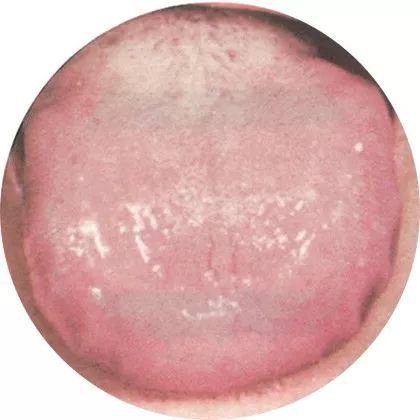 If the body is easily fatigued, mentally exhausted, and lacking energy, it indicates a state of various functional declines and reduced immunity.
If the body is easily fatigued, mentally exhausted, and lacking energy, it indicates a state of various functional declines and reduced immunity. This indicates deficiency syndrome and cold syndrome. It is also important to pay attention to the size of the tongue and the teeth marks on the edges.6 Greasy coating: Dampness and turbidity accumulation
This indicates deficiency syndrome and cold syndrome. It is also important to pay attention to the size of the tongue and the teeth marks on the edges.6 Greasy coating: Dampness and turbidity accumulation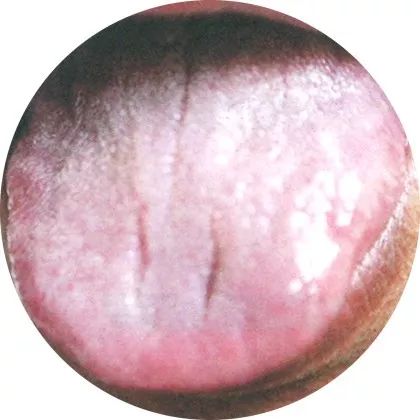 The tongue coating is white and adheres to the surface of the tongue, indicating internal cold and dampness; if the coating is yellow, it indicates internal dampness or phlegm turbidity accumulating and transforming into heat.
The tongue coating is white and adheres to the surface of the tongue, indicating internal cold and dampness; if the coating is yellow, it indicates internal dampness or phlegm turbidity accumulating and transforming into heat. This indicates dampness and turbidity accumulation, with Yang energy being restrained, mainly indicating phlegm dampness and food accumulation.7 Decayed coating: Excessive internal heat
This indicates dampness and turbidity accumulation, with Yang energy being restrained, mainly indicating phlegm dampness and food accumulation.7 Decayed coating: Excessive internal heat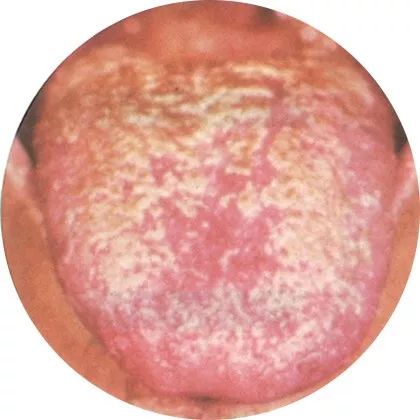 Be cautious of discomfort and infections caused by overeating.
Be cautious of discomfort and infections caused by overeating. Decayed coating is mostly associated with heat syndrome, indicating food accumulation and phlegm dampness.Keywords: tongue diagnosis, internal heat, deficiency syndrome, phlegm dampness, TCM
Decayed coating is mostly associated with heat syndrome, indicating food accumulation and phlegm dampness.Keywords: tongue diagnosis, internal heat, deficiency syndrome, phlegm dampness, TCM

